Here's how we made a complete house track in less than an hour
Try the timeboxing technique and come up with your own super-fast song
Most songs take days, weeks or even months to finish, but in this case, we decided to give ourselves just one hour to come up with the goods.
It's not an everyday approach, for sure, but it's a brilliant exercise to improve your creative efficiency. By forcing yourself through to the later stages of track building, you'll hone your skills as an arranger. You'll get a strong feel for how early-stage decisions affect the end result. And you also get the satisfaction of finishing a song, without any pressure for it to be a world-class effort - you can always refine it later if you feel there's release potential.
We'll use a technique called timeboxing to break up our hour into separate tasks:
1. Initial idea - 15 minutes
The most critical phase! To ensure we don't waste 60 minutes trying to turn weak ideas into great songs (tip: it ain't gonna happen), we repeat this step to brainstorm multiple song ideas. Each time the 15 minutes is up, we Save As... the project and render it to a WAV for reference. When we've got some good 'uns, we pick one to proceed with.
2. Variations - 5 minutes
We use quick, easy techniques like transposition, arpeggiation and using different sounds to 'multiply' our song's parts.
3. Vocal - 5 minutes
We source and edit a lead vocal from a sample pack.
4. Arrangement - 30 minutes
Time to build our full loop out into a complete song structure with transitions, fills, etc...
Get the MusicRadar Newsletter
Want all the hottest music and gear news, reviews, deals, features and more, direct to your inbox? Sign up here.
That adds up to 55 minutes, so we've got 5 minutes of headroom if anything overruns. You may allocate the time differently - find the sweet spot where you feel the push, but you can still be
creative. We'll use the timer on our smartphone to remind us when each stage is finished. This can be treated as a strict deadline, where you drop what you're doing and move on immediately, or as a reminder to wrap it up and move on as soon as you can.
It goes without saying that we'll be super- prepared, with our Dance Toolkit template for Ableton Live that contains ready-rolled Racks for designing, selecting, mixing and effecting sounds without getting bogged down in details.
OK, off we go.
Creating the track
00:00: Our initial idea
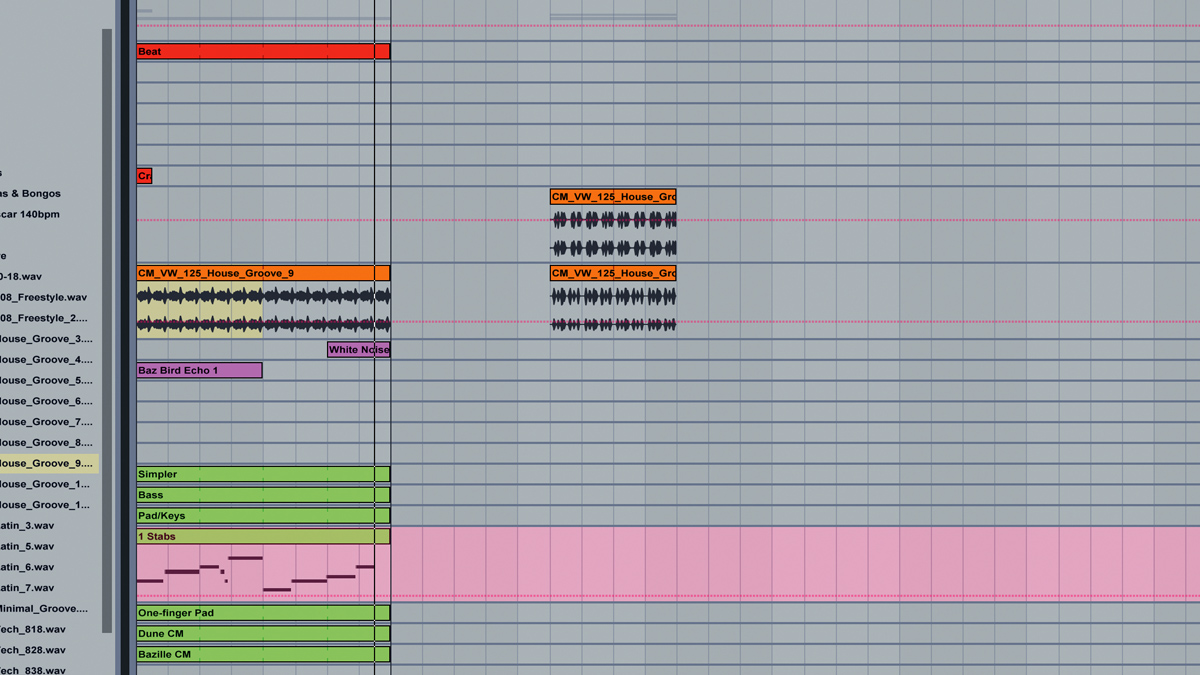
Our first goal is to create a basic musical loop within 15 minutes. We're feeling an old-school house vibe coming on, so we begin by programming a basic drum rhythm, comprising a kick, closed/open hi-hats, clap and percussion.
Our custom-made Ableton Live Racks make it super-fast to then scan through dozens of pre-loaded sounds in the context of the other parts. We pre-prepared a folder of our favourite
samples, so we search through that and dig out a tasty top loop from Vince Watson's VIP Series pack to complement the programmed beat.
Next, we spin through a selection of sampled stabs and chords. After a minute of twiddling, a juicy minor seventh chord leaps out, and within seconds we're jamming out a basic sequence that will form the core basis of our groove-fuelled house track.
07.41: More musical elements
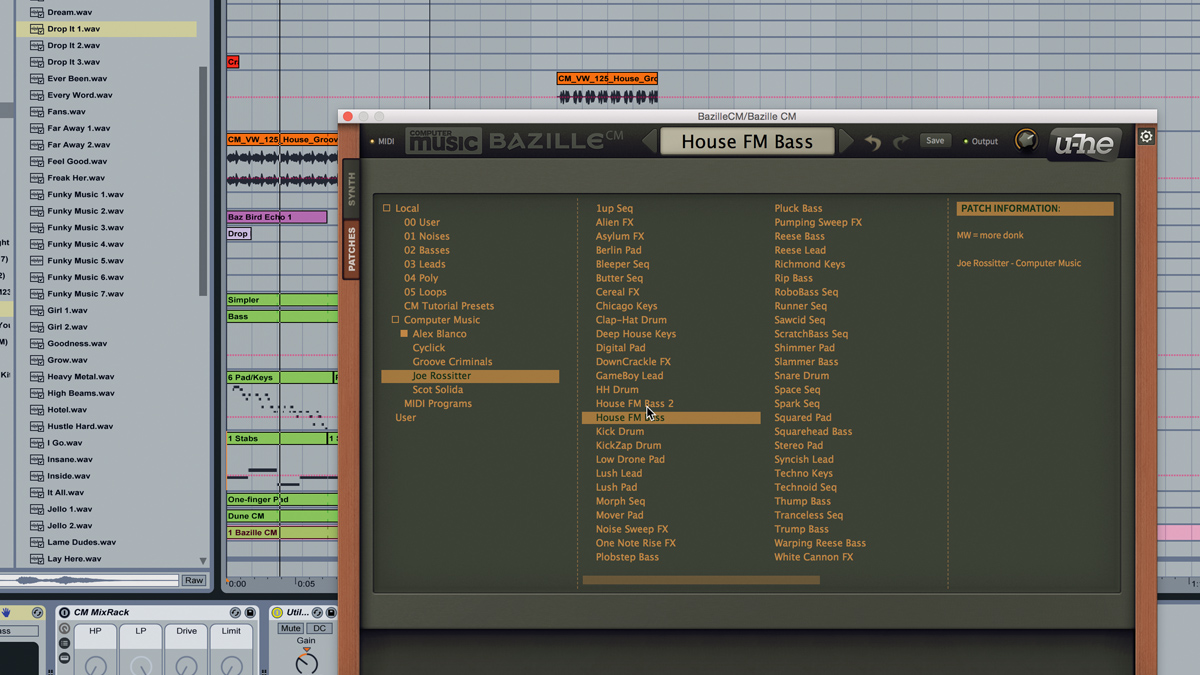
While we're in the melodic flow, we use our key/pad Rack to lay down a simple keyboard lead on top of it. So far, all our sounds have been synthetic, though, and to avoid our track sounding like a soft synth demo tune, we could do with some real-world sounds.
Vocal samples always sound great in house, so we grab a vibey phrase from a sample pack. Finally, the bassline - we know there's a wicked House FM Bass preset lurking in the Bazille CM preset bank, so we head straight for that.
14:25: Creating variations
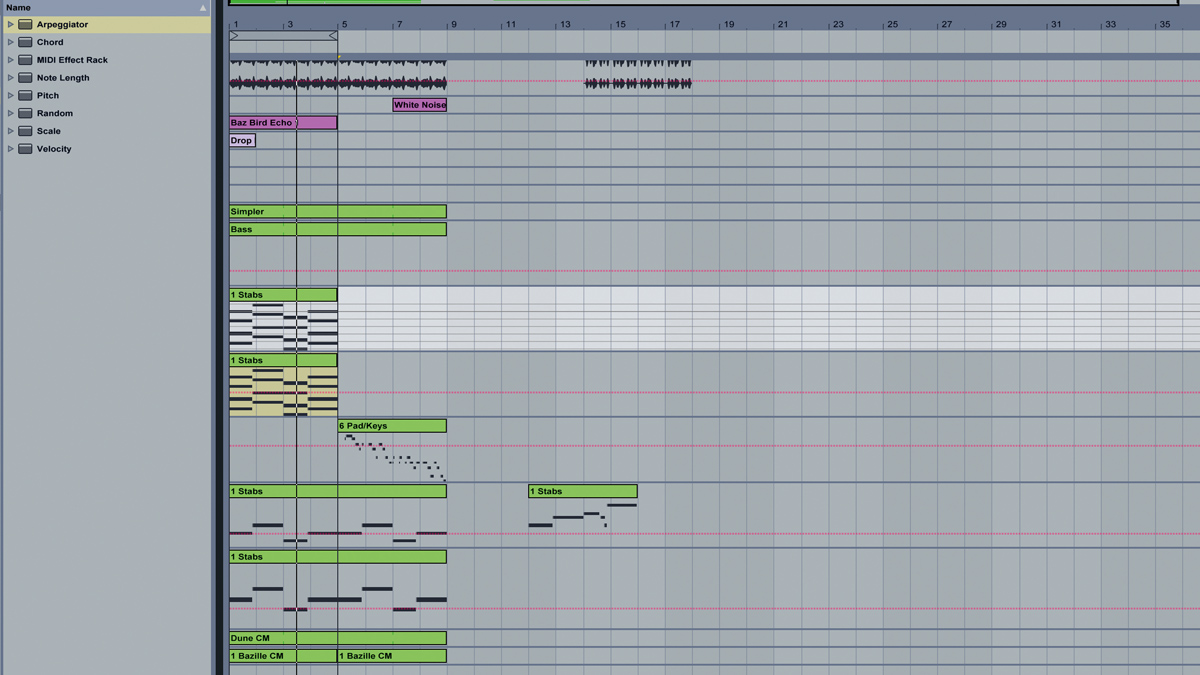
We've allocated the next five minutes to generating variations on the existing parts, to give us enough ammunition to build a full arrangement. We copy the minor seventh chord line to the one-finger pad track, transpose it into key, then filter it to remove the sub bass, reverse it and offset the sample position, for a muted, mid-filling chord. We create an instant string pad by copying the chords to the key/pad track, then add an arpeggiator for a bubbling top line.
19:34: The all-important vocal
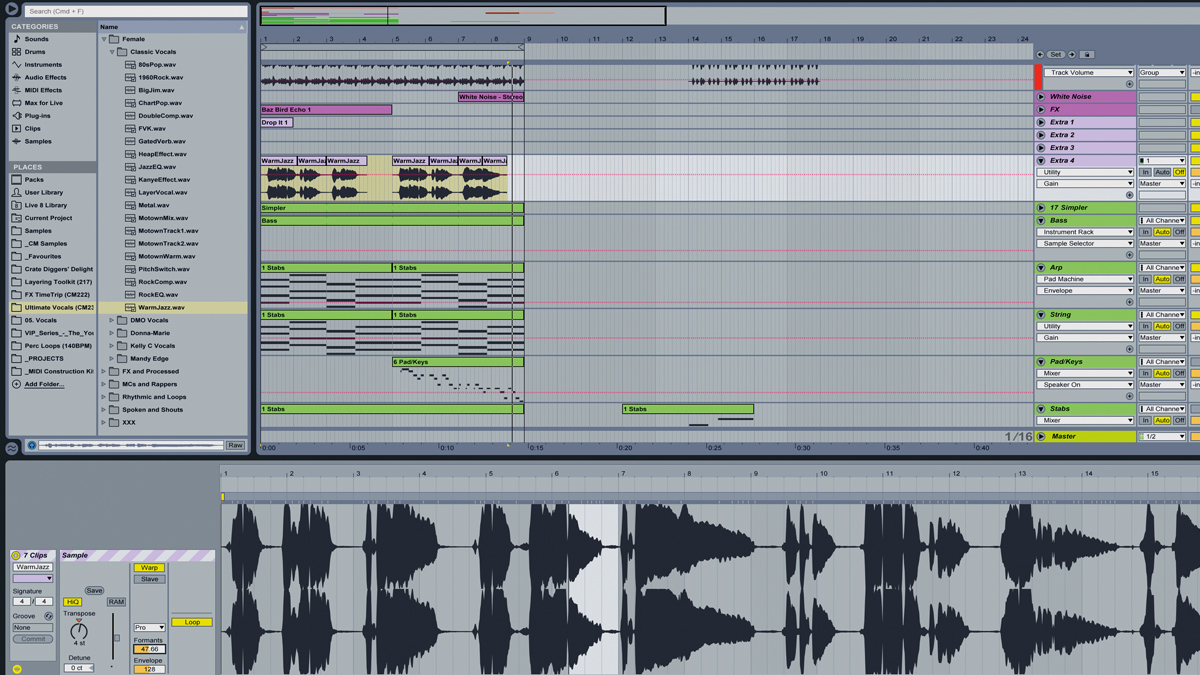
A soulful lead vocal will make our song come to life, so we find a vocal sample, transpose it into key, then chop it into four sections and change the clip's start offset to rapidly try different combos of lines. We use filtering and effects, and adjust the vocal's formant to enhance presence.
23:43: Quick housekeeping
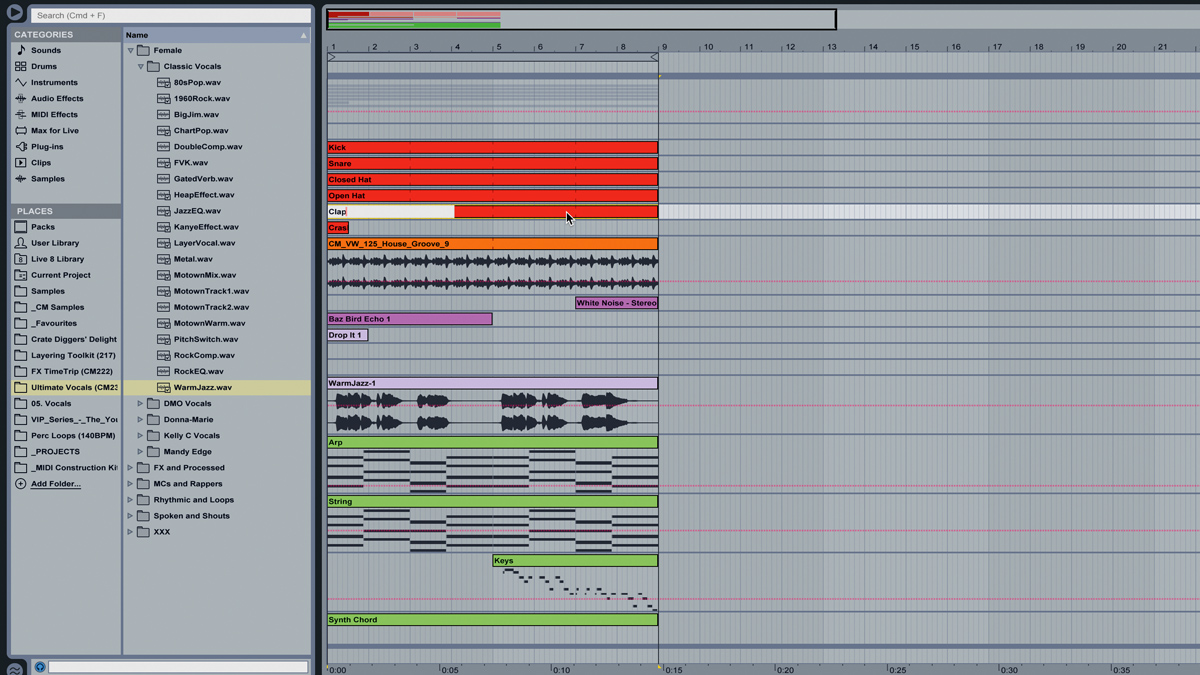
Our loop is now packed with ideas, so we'd best have a quick tidy up before arranging them. All unused tracks are deleted, and we name each track and clip for easy identification. We copy the drum MIDI clip to each percussion track, naming them appropriately. This gives us an overview of which drum parts are playing, so we can easily arrange them without faffing with the MIDI editor.
25:04: The arrangement
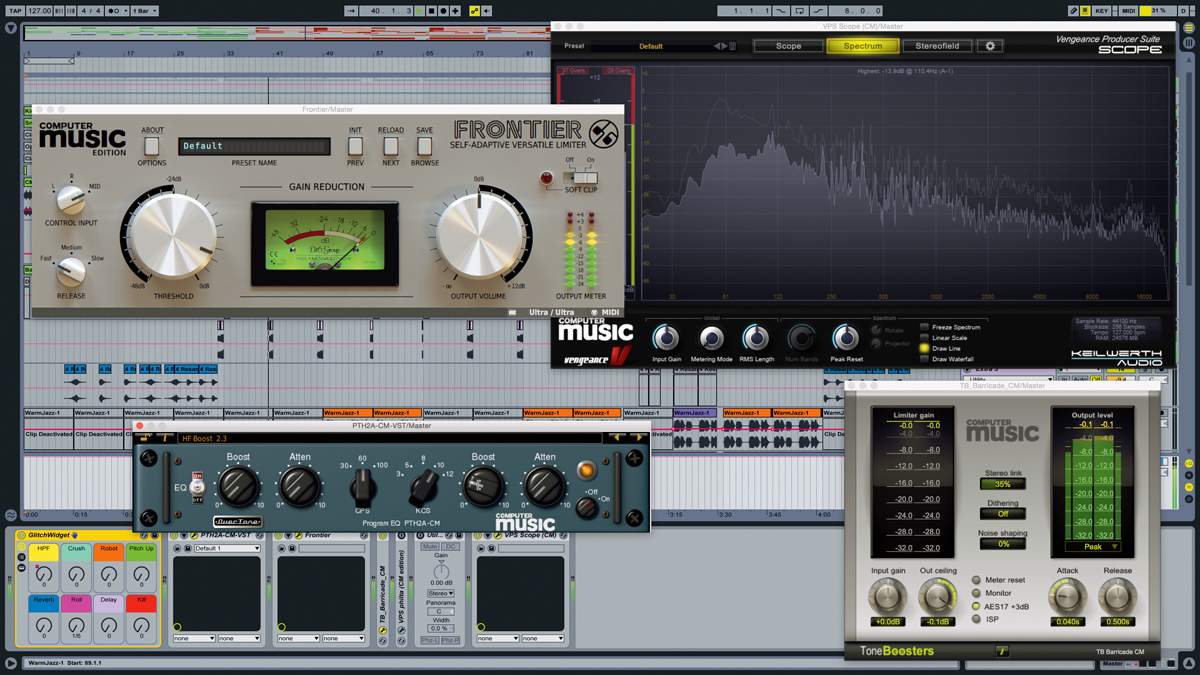
We rough out a song structure, then work through the track from beginning to end, muting parts and adding fills. We're working against the clock, so listening back to the full track is out of the question until we've laid down the closing vocal sample. To finish, we dial in basic master bus processing, then render it to a WAV - just in time for our self-imposed deadline. Phew!
Final thoughts
We did it! A complete track in under an hour! Take a listen in the video above. So, how would we take it to the next level, refining it into a release-quality track?
For starters, a touch of swing/shuffle could loosen up the groove. The kick/bass interaction can be improved - perhaps with a weightier kick. A general declutter would benefit the mix, either by thinning the arrangement or individual sounds. The same FX and transitions come up too often. And the structure could be more balanced.
Not a bad hour's work, though: see if you can do better. For more on finishing tracks faster, check out Computer Music issue 235, which is on sale now.
Computer Music magazine is the world’s best selling publication dedicated solely to making great music with your Mac or PC computer. Each issue it brings its lucky readers the best in cutting-edge tutorials, need-to-know, expert software reviews and even all the tools you actually need to make great music today, courtesy of our legendary CM Plugin Suite.










